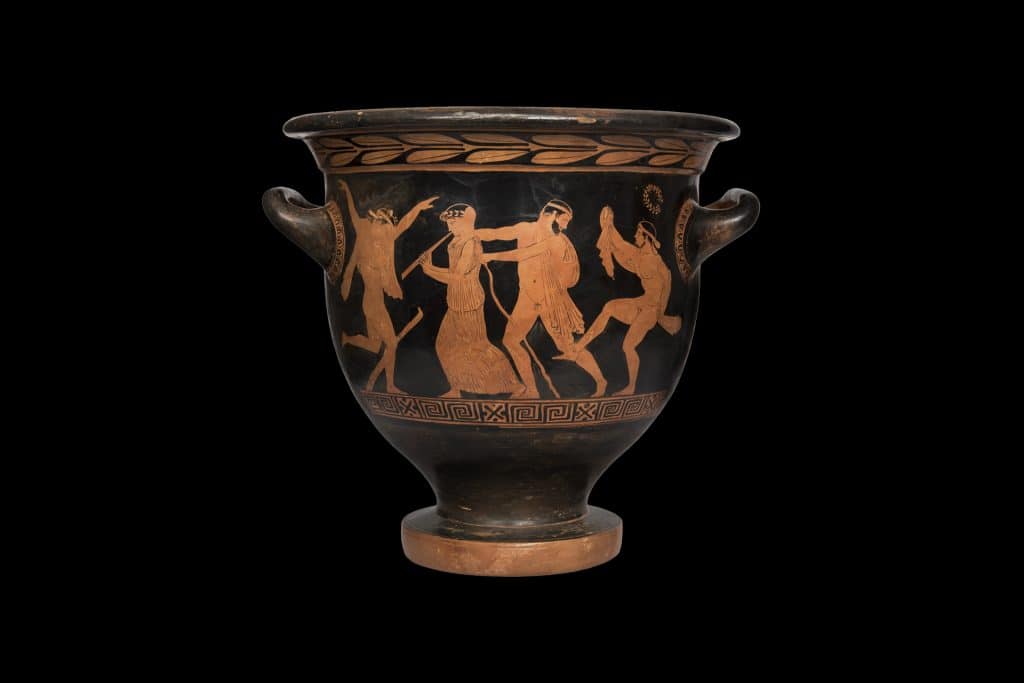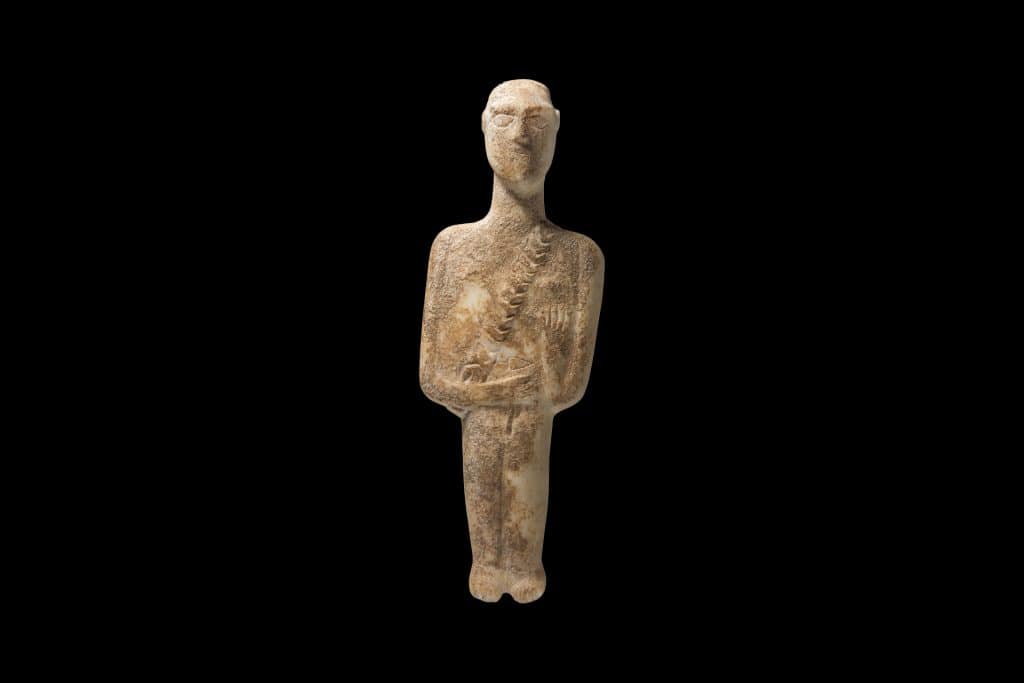White-ground lekythos
OBJECTS 360°
DESCRIPTION
White lekythoi appeared around 470 BC and continued to be produced exclusively for funerary use until 400 BC. The white ground was achieved by coating the surface of the vases with a very fine slip of white clay (with kaolin), which took on the distinctive hue after firing. The male figure is represented in the type of the “peripolos”, i.e. that of a lightly armed young man serving his military duties in the border areas of Attica.
The iconography of white lekythoi provides important information about the funerary monuments of the period, particularly the stelai and the columns that marked the graves. Most of the lekythoi with funerary scenes show relatives of the deceased visiting the grave. The women carry in large panniers the objects necessary for the funerary cult, such as unguentaria, fillets, wreaths etc. Sometimes, figures were depicted beside the grave, watching the events. These figures probably represent the deceased.
The Woman Painter to whom the illustrated lekythos is attributed was so named by modern scholars for the beauty of the women depicted on his vases. He probably specialised in the decoration of white lekythoi, as his works known at present are all vases of this type. White lekythoi seem to be his favourite shape, since all surviving vases attributed to him are of this type.
MORE

OBJECTS 360°
Statue of a boy

OBJECTS 360°
Red-figure bell krater

OBJECTS 360°